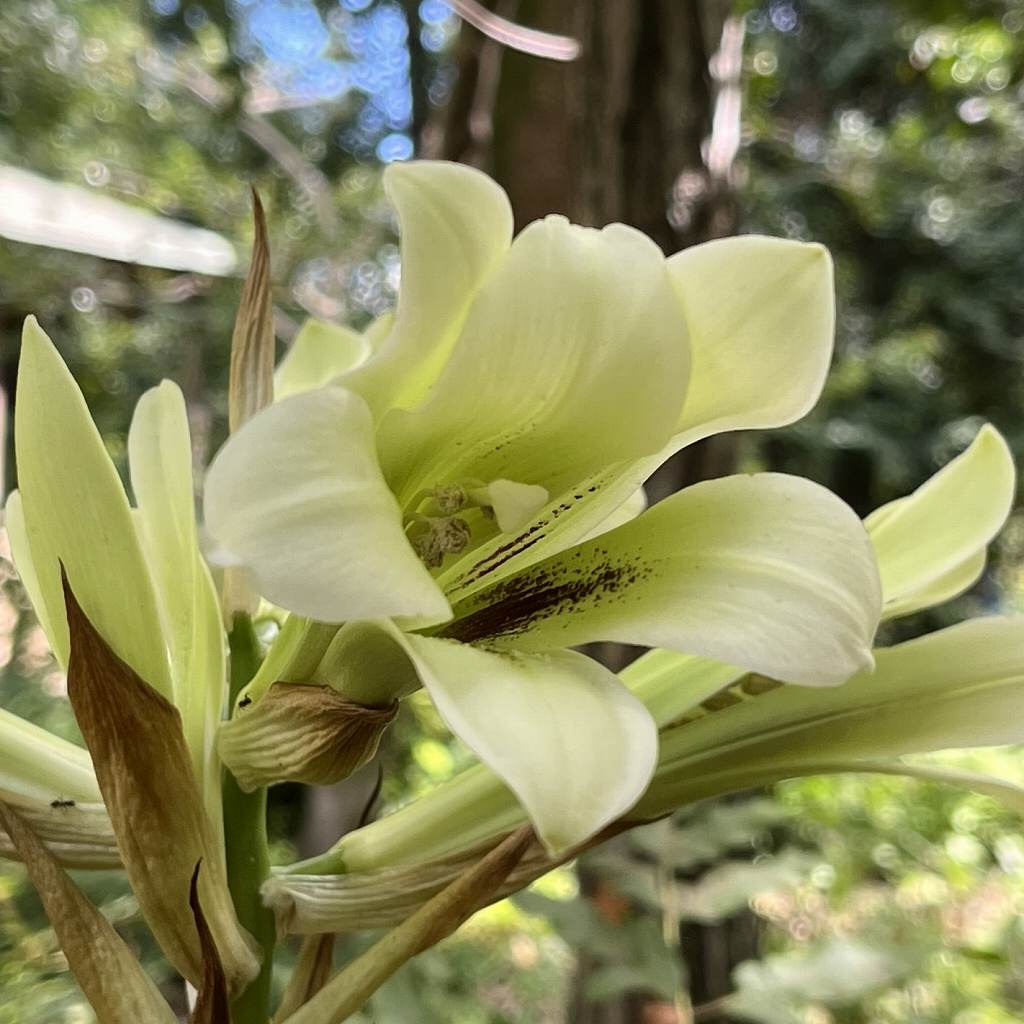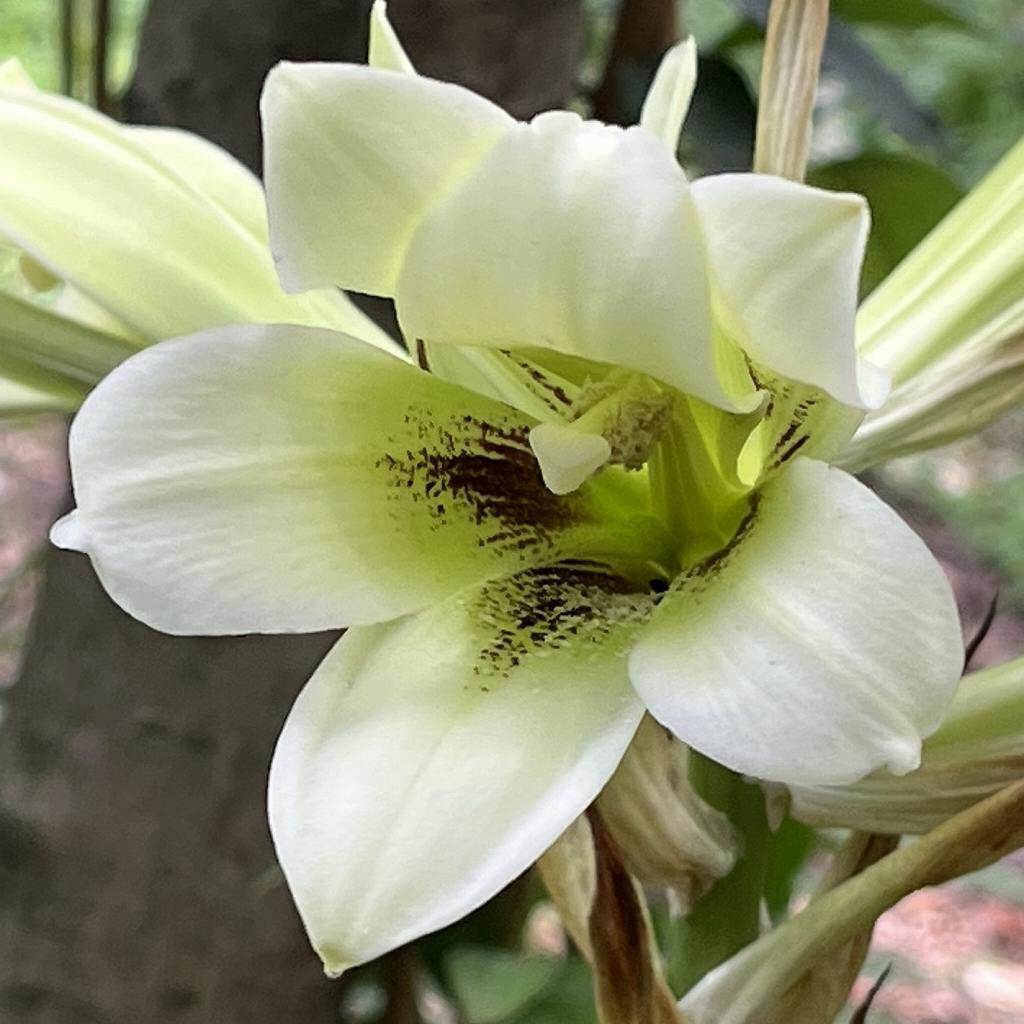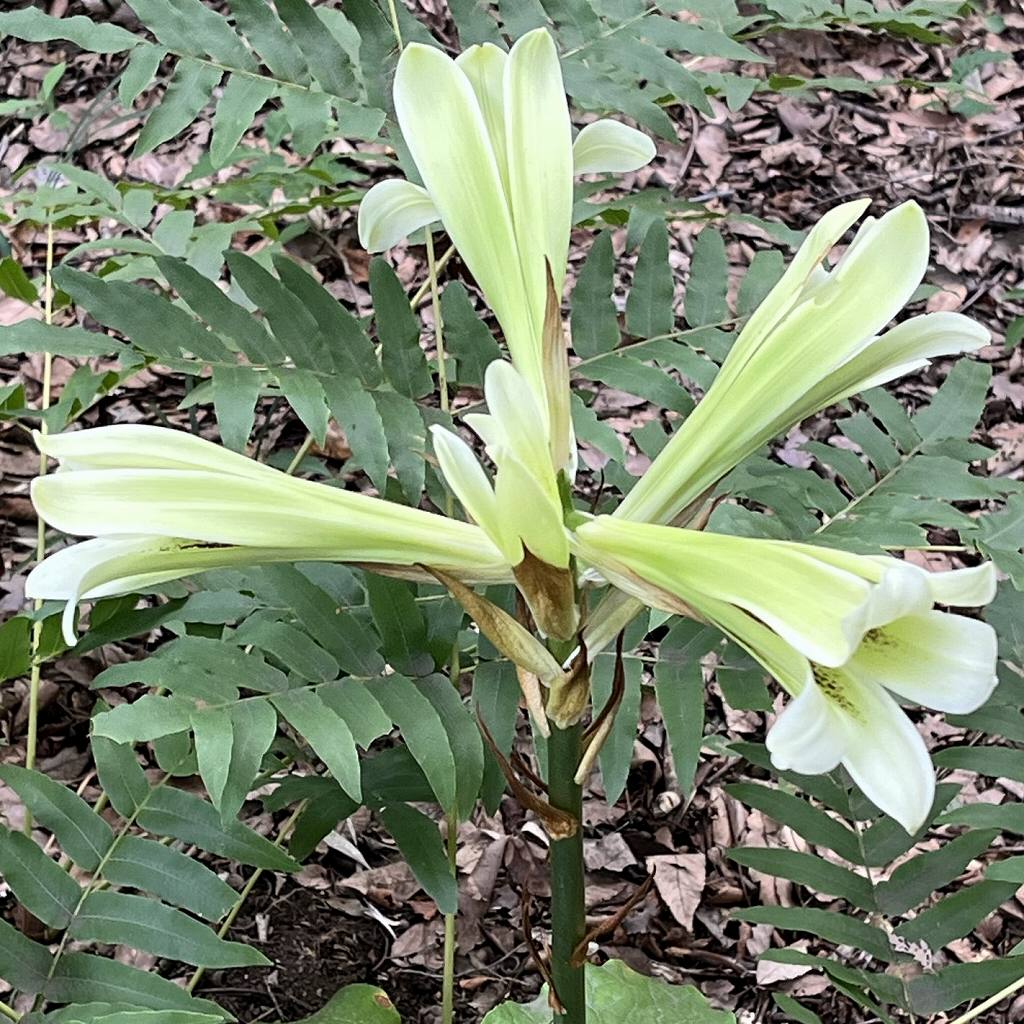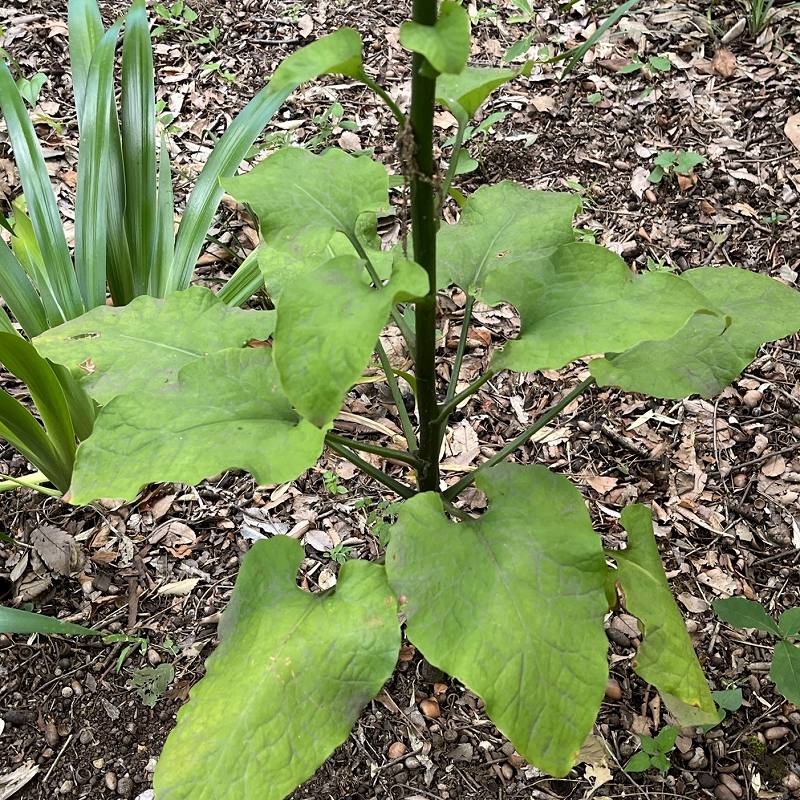ウバユリの花はユリ属に似ている漏斗形、葉はユリ属に似ていない心臓形。花が咲きながら葉が枯れることがあるため、歯がない姥百合です。
Heartleaf Lily flowers are funnel-shaped, similar to Lilium, and the leaves are heart-shaped, unlike Lilium. The Japanese name means “toothless old woman’s lily” because the leaves sometimes wither while the flowers are blooming.
【仮名】ウバユリ
【和名】姥百合
【英名】Heartleaf Lily, Giant Lily
【学名】Cardiocrinum cordatum
【誕生】07/ 19
【開花】07, 08月
【花色】White




ウバユリ
ウバユリの概要
ウバユリはユリ科ウバユリ属の多年草。本州の関東地方以西、四国、九州に分布し、山地の林内などで自生しています。花はユリ属に似ている漏斗形、葉はユリ属に似ていない心臓形。鱗茎には滋養強壮や整腸などの作用があり、天ぷら、煮物、和え物、茶碗蒸しなどで食べられます。
ウバユリの名前
ウバユリの名前の由来は「老女の百合」です。花が咲きながら葉が枯れることがあるため、その様子が老いて歯がなくなった女性「姥」に喩えられたから。ラテン語の属名カルディオクリヌムは「心臓の百合」、種小名コルダトゥムも「心臓形の」という意味で、葉の形に由来します。
ウバユリの姿形
ウバユリは長い葉柄の基部で鱗茎が膨れ、株元から太い中空の茎が伸びて直立。葉は輪生し、心臓形の葉身に網目状の脈が走ります。花は漏斗形で深く裂け、花被片が6枚、雄しべが6本、雌しべが突出。花被片は緑色を帯びた白色で褐色の斑点が入ります。花後は蒴果で種子を散布。
ウバユリの変種
ウバユリの変種「大姥百合」は本州の中部地方以北、北海道、樺太、千島列島に分布。名前の由来は姥百合よりも草丈が高く、花数も多いからです。かつてアイヌの人々はその鱗茎を掘り取って搗き潰し、水を加えて澱粉を分離。そのまま熱を加えて食べたり、乾かして保存しました。
Heartleaf Lily
Overview of Heartleaf Lily
Heartleaf Lily is a perennial plant belonging to the Cardiocrinum of the Liliaceae family. Distributed west of the Kanto region of Honshu, Shikoku, and Kyushu, it grows naturally in forests in mountainous areas. The flowers are funnel-shaped, similar to those of the genus Lilium, and the leaves are heart-shaped, unlike those of the genus Lilium. The bulbs have effects such as nutritional tonic and intestinal regulation, and can be eaten in tempura, simmered dishes, aemono, chawanmushi, etc.
Name of Heartleaf Lily
Heartleaf Lily’s Japanese name means “old woman’s lily”. Because the leaves sometimes wither while the flowers are blooming, it was likened to an old woman who lost her teeth due to old age. The Latin genus name Cardiocrinum means “heart lily”, and the species name Cordatum also means “heart-shaped”, derived from the shape of the leaves.
Shape of Heartleaf Lily
Heartleaf Lily has a swelled bulb at the base of its long petiole, and a thick hollow stem extends from the base of the plant to stand upright. The leaves are whorled and have heart-shaped leaf blades with reticulated veins. The flowers are funnel-shaped and deeply cleft, with 6 tepals, 6 stamens, and protruding pistils. The petals are greenish white with brown spots. After flowering, it becomes a capsule and disperses the seeds.
Variant of Heartleaf Lily
The Heartleaf Lily variety “Glehnii” is distributed in the Chubu region and north of Honshu, Hokkaido, Karafuto, and the Kuril Islands. It is taller than Heartleaf Lily and has more flowers. In the past, the Ainu people dug up the bulbs, pounded them, and added water to separate the starch. The starch was heated and eaten, or dried and preserved.


